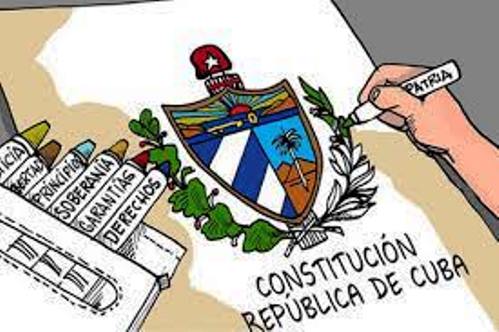Epistemologies of Cuban Constitutional Law.

The functions of the Constitution are reduced to one, the political function, because this more than a problem of law is a problem of power. By understanding the functions of any Constitution, values such as justice and security can be strengthened.

What are the functions of the Constitution?
The Constitution is a multifaceted phenomenon, which has several functions, which, although different, are interrelated. The recognized functions are: political, ideological, juridical, organizational and legitimizing, establishing with them that it is above all a phenomenon of power and a juridical problem, whose essence is class-based and expresses the predominant political will, the result of political conciliations or conquests.
Ultimately, all the functions of the Constitution are reduced to one, the political function, because this, more than a problem of law, is a problem of power. By understanding the functions of any Constitution, values such as justice and security can be strengthened.
What do the expressions constituent power and constituted power mean?
The term constituent power expresses the sovereign popular will decided to organize itself in a certain way and to give itself a Constitution that legally consolidates its conquests and establishes the guidelines for the action of the institutions and entities existing in society (State, organizations of diverse types and individuals). Every Constitution supposes above all a constituent power, both concepts are intimately linked.
Once a Constitution is proclaimed, the differences between the constituent power and the constituted power are established, the functions of the constituent power cease, its continuity lies in the body created by the Constitution, while the constituted power has a juridical nature, its formation and competence are defined in the Constitution.
Why the Cuban Constitution of 1976 is considered to have a sui generis character, fundamentally because of its elaboration process.
Because this Preliminary Draft of the Constitution was submitted to popular consultation. The popular consultation consisted of the people in Assemblies where more than six million citizens participated, discussed the draft, expressed their opinions, made changes and proposed modifications, and then it was submitted to the consultation of the state and Party organs. This shows that the people had ample opportunity to discuss the draft bill in the aforementioned assemblies held in the country. It was submitted to a referendum on February 15th, 1976.
The Referendum showed a high level of social homogeneity, of support for the Revolution. The identification with the Revolution of the majority of social groups and sectors was evident. There was an evident demonstration of conscious subordination of individual interests to social and collective interests.
5 general principles of the 1976 Constitution
Democratic centralism.
Popular Unity.
Socialist democracy.
Socialist Legality.
Social and Formal Equality.
Predominance of the social interest over the individual.
Political monopartisanship.
Popular participation, revolutionary control by the electors.
Written by DR Osvaldo Manuel Álvarez Torres.




